There’s a lot of talk in the business world about “running your property at a loss” just to claim negative gearing. But what does that mean, exactly? And is it something you should be doing with your business? In short, running your business at a loss means operating your business at a net loss. This means that your operating expenses are greater than your revenue. In this video, we’ll discuss what it means to run your property investing business at a loss, and some of the reasons why you might want to do it.
There are a few reasons why someone might think this is a good idea. For one, they may believe that they can deduct their losses from their taxes. And while it’s true that you can deduct the business losses on your taxes, are you really losing more money than if you bought a self-sustainable property? So why would you choose this method if you are really losing money?
Is it unreasonable to think that you might be running your business at a loss because you don’t have the right systems and strategies in place? Are there other ways to structure your business so that it can run more efficiently, without relying on negative gearing? There are many factors to consider when determining whether or not “running your business at a loss” is the best approach for you.
I just want to make this clear that negative gearing is not a strategy but an outcome. Negative gearing is used by investors to minimize their taxable income. It’s achieved by owning an investment property and renting it out for less than the mortgage repayments, insurance, and other associated costs of ownership. The loss incurred each year is then offset against any other income earned, such as salary or wages.
Negative gearing explained in simple terms
Disclaimer, The figures below are for demonstration purposes only and does not constitute financial advice. We recommend consulting a professional before making any financial decisions.
Let’s say you purchase an investment property for $500,000 with a 20% deposit of $100,000. This leaves you with a loan of $400,000.
Assuming the interest rate on your loan is 5% and an interest-only loan, your annual mortgage repayments would be $20,000. But that’s not all – you also have to factor in the costs of ownership, such as insurance, council rates, and maintenance. Let’s say these come to a total of $5,000 per year.
This means that your total costs of ownership are $25,000 per year ($20,000 + $5,000). And if you’re only able to rent out the property for $18,000 per year, you’re running at a loss of $7,000 ($25,000 – $18,000).
The idea behind negative gearing is that the loss incurred each year can be offset against other forms of income, such as your salary. So if you earn $50,000 per year and you make a loss of $7,000 from your investment property, your taxable income will only be $43,000 ($50,000 – $7,000).
Now let’s imagine your rent is 25,000 which covers all your expenses. In this case, your investment property is not running at a loss. Though you’re not running at a profit either. So in this instance, you are not going to get any further tax savings as your rent has covered your expenses.
So before choosing this approach, it’s important to consider whether are saving $7000 or are you losing $7000 in potential earnings. Running your property at a $7000 loss means out of your wage you are going to have to add an additional $7000 to support the loan and expenses.
Let’s imagine that your tax rate is at 50%, using the lesser-rent example of 18,000. Because you have used that 7,000 out of your wage to support the rental property instead of paying tax on the 7000 you have saved 3500 in the tax you would have paid on the 7000. This means that you have saved around 3500 in tax you would have paid, but have you saved 3500 or have you lost an additional 3500 of income?
So it’s not unreasonable to think you wasting money to save on tax?
Think of it from the perspective of running a business. If your business is making a profit, that’s great. But if your business is running at a loss, it’s not so great. In fact, it’s probably not sustainable in the long term.
It’s quite sad to think, that time, and time again professionals or high-income earners will do anything for a tax deduction, yet they would never consider running their business at a loss! Is this a lack of education for high-income earners? Are there professionals like accountants so focused on reducing their taxable income that they forget they are actually earning less money?
It’s funny that most people assume because someone is a high-income earner they must completely understand the best ways to reduce their taxable income. Or you go to some random accountant who has never actually achieved anything fantastic themselves and taken their advice and end up losing money. Being a high-income earner, Unfortunately, doesn’t mean you are going to have the education to make the right decisions with your money. There are many professionals that have little or no understanding of taxes and deductions, which leads to them making bad decisions.
What are the risks of running your business at a loss?
There are a few risks associated with running your business at a loss. For one, it can put a strain on your finances. Is your other income guaranteed? What if you lose your job or have an unexpected medical expense? In addition, running your business at a loss can also lead to burnout. When you’re constantly trying to make ends meet, it can be easy to get overwhelmed and burnt out. This can lead to poor decision-making and can even put your health at risk.
So why do people high-income earners, and everyday people get prayed upon?
Think about it, how do people sell products? They typically use some form of marketing, whether that’s online ads, TV commercials, or even just word-of-mouth. And what do these marketing strategies have in common? They all target people who are vulnerable in some way.
For example, who likes to pay tax? Nobody. So when a tax accountant comes along and says, “Hey, I can help you reduce your taxable income,” they’re targeting people who are vulnerable to the idea of saving money on taxes.
The same can be said for negative gearing. It’s marketed as a way to save money on taxes, but in reality, it’s a way to lose money. And yet, people still fall for it. Why? Because they’re vulnerable to the idea of saving money.
So next time you’re considering negative gearing, or any other financial decision for that matter, take a step back and ask yourself, “Am I being preyed upon?” If the answer is yes, then it’s probably not a good idea.
Could I of built my portfolio as quickly as I did if I negatively geared?
Time and time again you have heard that capital cities are the only place to buy property, as the growth is higher. You might have even heard that you should only buy new properties as they grow quickly and can claim negative gearing and depreciation. As I previously stated, I am a firm believer in building a portfolio that suits your own personal goals and risk profile. With this being said, if you’re goal is to build a portfolio quickly, then negative gearing is not the strategy for you.
Think about it, where are most people located? In capital cities. And where is it easy to sell a house? Where they are located. The thing about property unlike shares is that you can touch it. People feel more comfortable buying something that they can physically see.
It’s like the mentality that new is always better. You know for a start on a property what appreciates in value and what doesn’t. Land appreciates while The building depreciates.
These days it’s a myth that capital cities increase in value at a higher rate than regional areas. If you look at the data over the past 20 years, there have been plenty of times when regional areas have outperformed capital city markets.
The other issue with trying to build a portfolio quickly is that you’re more likely to make mistakes. When you’re rushed, it’s easy to overlook things or make rash decisions. This is why it’s important to take your time and do your research before making any investment decision.
If I negatively geared my portfolio, I would have never been able to buy as many properties as I have. Without cash flow, there were only so many properties I could afford to buy.
And as I always say, cash is king. Having a strong cash flow allows you to weather the storms that inevitably come with being a property investor. It also gives you the flexibility to take advantage of opportunities when they arise.
So if your goal is to build a portfolio quickly, negative gearing is not the strategy for you. Instead, focus on building a strong cash flow and diversifying your portfolio across different markets.
What are the benefits of positive cash flow?
There are many benefits to having a positive cash flow, but the two main ones are that it gives you financial flexibility and it helps you weather market downturns.
When your portfolio is generating positive cash flow, you have the flexibility to take advantage of opportunities as they arise. For example, you might be able to buy an extra property or two when prices are low or make improvements to your properties that will increase their value.
Positive cash flow also helps you weather market downturns. If rents start to fall or vacancy rates rise, you’ll still have enough money coming in to cover your costs. This can help you avoid having to sell your properties at a loss.
So if you’re looking to build a strong portfolio that will withstand the ups and downs of the market, focus on generating positive cash flow.




